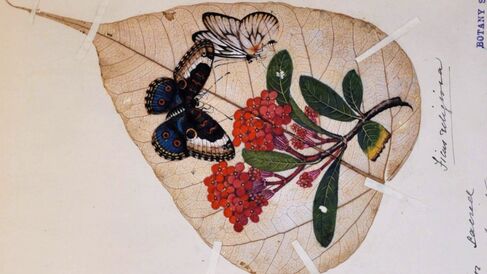Resources

This page contains several useful resources concerning this project including a bibliography of secondary literature.
Bibliography
Alberti, SJ., ‘Objects and the Museum’. Isis, 96, no. 4 (2005), pp. 559-571.
Allen, DE., ‘The Early Professionals in British Natural History’. Archives of Natural History, 1 (1985), pp. 1-12.
Allen, DE., The Naturalist in Britain: A Social History. (Penguin Books, 1978).
Browne, J., ‘A Science of Empire: British Biogeography Before Darwin’. Revue d’histoire des sciences, 45, no. 4 (1992), pp. 453-475.
Browne, J., The Secular Ark: Studies in the History of Biogeography. (Yale University Press, 1983).
Delbourgo, J., and Dew, N., (eds.) Science and Empire in the Atlantic World (Routledge, 2008).
Dietz, B., ‘Making Natural History: Doing the Enlightenment’. Central European History, 43 (2010), pp. 25-46.
Drayton, R., Nature’s Government: Science, Imperial Britain and the ‘Improvement’ of the World (Yale University Press, 2000).
Eckstein, L., and Schwarz, A., ‘The Making of Tupaia’s Map: A Story of the Extent and Mastery of Polynesian Navigation, Competing Systems of Wayfinding on James Cook’s Endeavour, and the Invention of an Ingenious Cartographic System’. Journal of Pacific History, 54, no. 1 (2019), pp. 1-95.
Endersby, J., Imperial Nature: Joseph Hooker and the Practices of Victorian Science. (University of Chicago Press, 2008).
Fan, F., British Naturalists in Qing China: Science, Empire, and Cultural Encounter (Harvard University Press, 2009).
Fullagar, K., and McDonnell, M., (eds) Facing Empire: Indigenous Experiences in a Revolutionary Age (Johns Hopkins University Press, 2018);
Gardiner, LM., ‘Cambridge University Herbarium: Rediscovering a Botanical Treasure Trove’. JoNSC, 6 (2018), pp. 31-47.
Goodman, D., ‘What it meant to be Linnaean in Revolutionary France’. Isis, 111, no. 1 (2020), pp. 67-85.
Grove, R., Green Imperialism: Colonial Expansion, Tropical Island Edens and the Origins of Environmentalism, 1600–1860 (Cambridge University Press, 1995).
Güttler, N., Das Kosmoskop: Karten und ihre Benutzer in der Pflanzengeographie des 19. Jahrhunderts. (Wallstein Verlag, 2014).
Hoquet, T., ‘Botanical Authority: Benjamin Delessert’s Collections Between Travelers and Candolle’s Natural Method (1803–1847)’. Isis, 105, no. 3 (2014), pp. 508-539.
Koerner, L., Linnaeus: Nature and Nation (Harvard University Press, 1999).
Larson, JL., Interpreting Nature: The Science of Living Form from Linnaeus to Kant (Johns Hopkins University Press, 1994).
Lightman, B., McOuat, G., and Stewart, L., (eds.)., The Circulation of Knowledge Between Britain, India and China: The Early Modern World to the Twentieth Century (Brill, 2013).
Mabberley, D., Jupiter Botanicus: Robert Brown and the British Museum (Verlag von J. Cramer, 1985).
Mackenthun, G., Nicolas, A., and Wodianka, S., (eds.). Travel, Agency and the Circulation of Knowledge (Waxmann, 2017).
Manning, P., and Rood, D., (eds.)., Global Scientific Practice in an Age of Revolutions, 1750–1850 (University of Pittsburgh Press, 2016).
McOuat, G., ‘Cataloguing Power: Delineating ‘Competent Naturalists’ and the Meaning of Species in the British Museum’. British Journal for the History of Science,34, no. 1 (2001), pp. 1-28.
Miller, DP., and Reill, PH., (eds.)., Visions of Empire: Voyages, Botany and Representations of Nature (Cambridge University Press, 1998).
Müller-Wille, S ‘Linnaean Paper Tools’, In HA. Curry, N. Jardine, JA. Secord and EC. Spary (eds.)., Worlds of Natural History (Cambridge University Press, 2018), pp. 205-220.
Müller-Wille, S., ‘Names and Numbers: Data in Classical Natural History’. Osiris, 32, no. 1 (2017), pp. 109-128.
Müller-Wille, S., ‘Walnuts in Hudson’s Bay, Coral Reefs in Gotland: The Colonialism of Linnaean Botany’. In L. Schiebinger and C. Swan (eds.)., Colonial Botany: Science, Commerce, and Politics in the Early Modern World (University of Pennsylvania Press, 2005).
Osborne, MA., Nature, the Exotic, and the Science of French Colonialism (Indiana University Press, 1994).
Porter, R., ‘Gentlemen and Geology: The Emergence of a Scientific Career, 1660–1920’. Historical Journal 21, no. 4 (1978), pp. 809-836.
Raj, K., Relocating Modern Science: Circulation and the Construction of Knowledge in South Asia and Europe, 1650–1900 (Palgrave Macmillan, 2007).
Rose, ED, ‘The Roots of Disorder: Botany became and Unlikely Battleground in the Age of Revolutions’. History Today, 70, no. 6 (2020), pp. 70-83.
Rose, ED., ‘Publishing Nature in the Age of Revolutions: Joseph Banks, Georg Forster and the Plants of the Pacific’. Historical Journal, 63, no. 5 (2020), pp. 1132-1159.
Rose, ED., ‘Specimens, Slips and Systems: Daniel Solander and the Classification of Nature at the World’s First Public Museum’. BJHS, 51, no. 2, (2018), pp. 205-237.
Schaffer, S., et al. (eds.)., The Brokered World: Go-Betweens and Global Intelligence, 1770-1820 (Science History Publications, 2009).
Shapin, S., A Social History of Truth: Civility and Science in the Seventeenth-Century (University of Chicago Press, 1994).
Sivasundaram S., ‘Focus: Global Histories of Science’. Isis, 101 (2010), pp. 95-97.
Sivasundaram, S., Waves Across the South: A New History of Revolution and Empire (William Collins, 2020).
Sloan, K., and Nyhan, J., ‘Enlightenment Architectures: The Reconstruction of Sir Hans Sloane’s Cabinets of ‘Miscellanies’’ Journal of the History of Collections, 33, no. 2 (2021), pp. 199-218.
Stafleu, FA., Linnaeus and the Linnaeans: The Spreading of their Ideas in Systematic Botany (Oosthoek, 1978).
Stevens, PF., The Development of Biological Systematics: Antoine-Laurent de Jussieu, Nature, and the Natural System (Columbia University Press, 1994).
